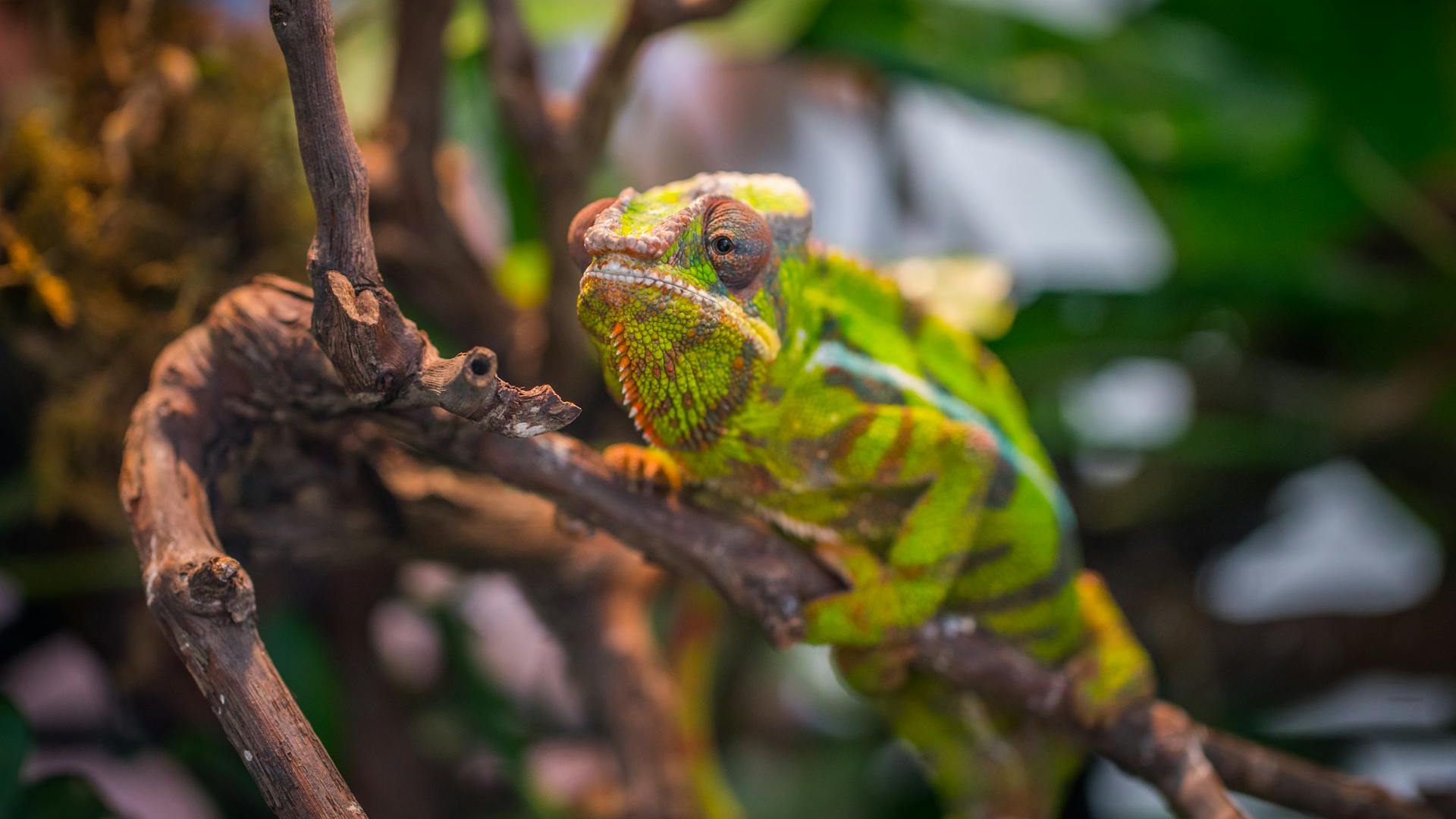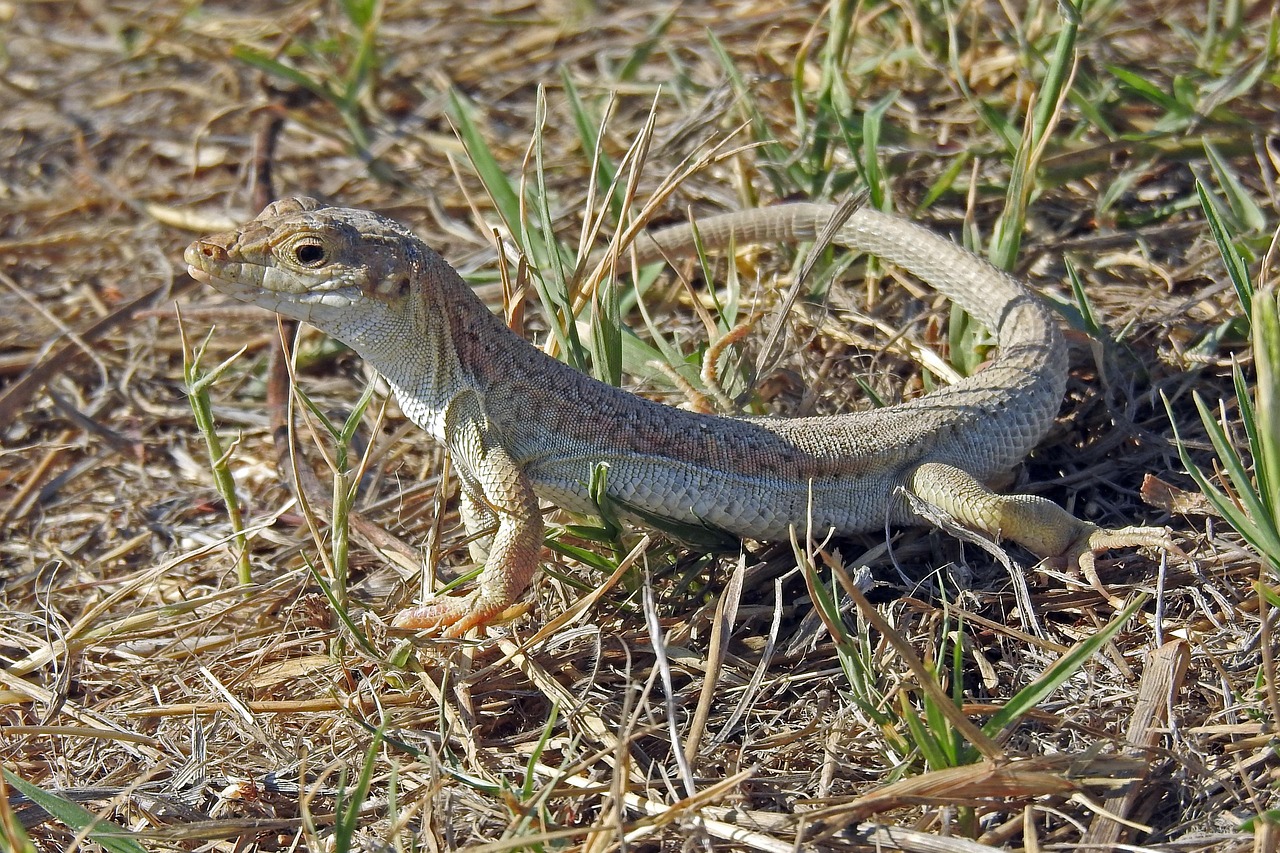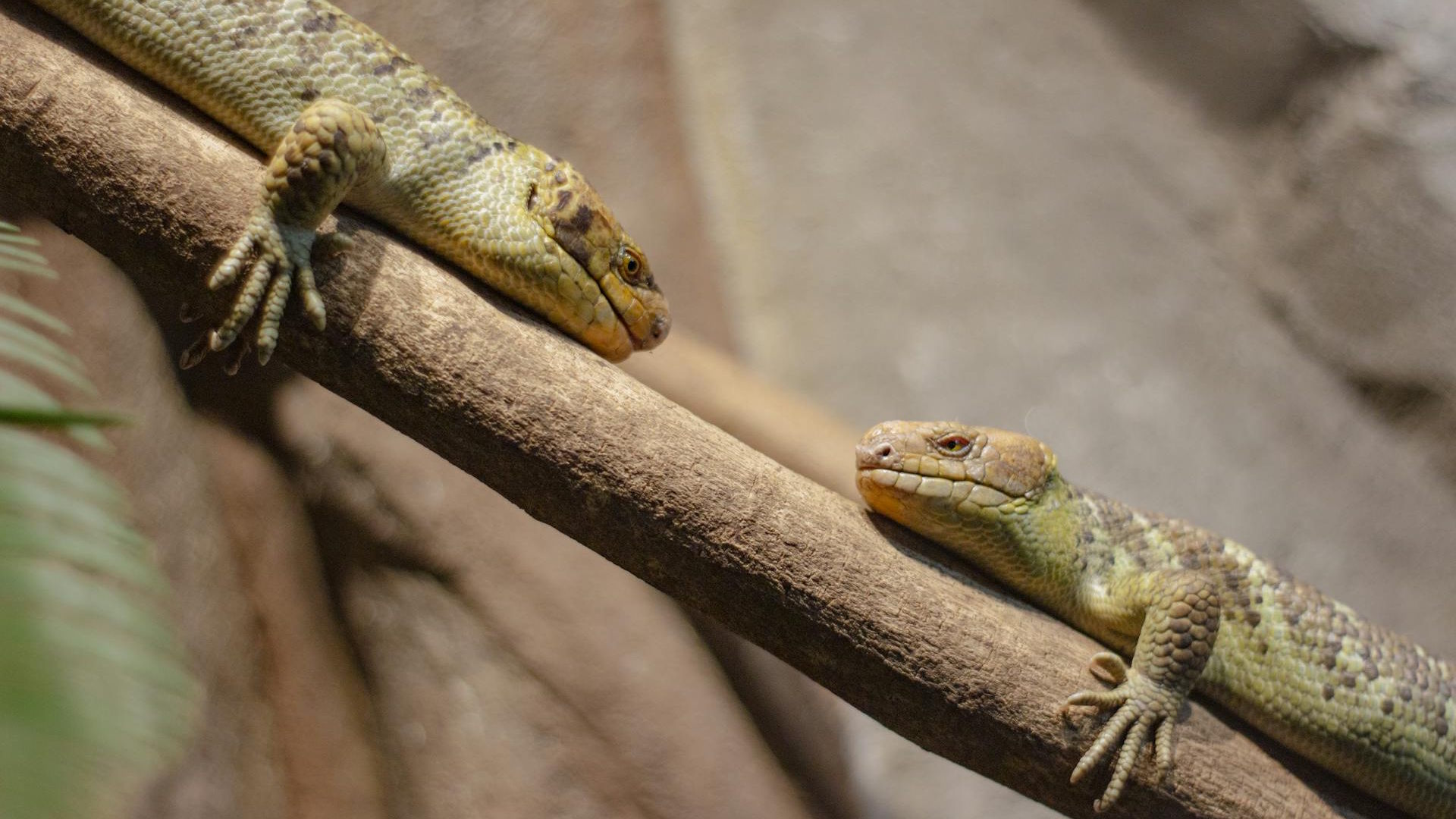Desert environments represent some of the harshest conditions on Earth, with scorching daytime temperatures, freezing nights, minimal water, and sparse vegetation. Yet amidst these seemingly uninhabitable landscapes, certain remarkable creatures have not only adapted but thrive. Among these desert specialists, one stands out for its extraordinary resilience – the desert lizard. These remarkable reptiles have evolved fascinating physiological and behavioral adaptations that allow them to survive and flourish in conditions that would quickly prove fatal to most other creatures.
Meet the Masters of Desert Survival

Several lizard species have earned well-deserved reputations as desert survival specialists, with the thorny devil of Australia, the sandfish of North Africa, and various species of horned lizards in North America leading the pack. These reptiles share common adaptations while also evolving unique survival mechanisms specific to their particular desert environments. Their evolutionary journey has produced specialized body structures, behaviors, and physiological processes that work in concert to overcome the extreme challenges of desert life. What makes these creatures particularly fascinating is how they’ve transformed the very conditions that make deserts deadly into advantages, essentially turning survival threats into opportunities.
The Remarkable Thorny Devil

The thorny devil (Moloch horridus) of Australia stands as perhaps the most visually distinctive desert specialist, with its body covered in sharp, conical spines that serve multiple survival functions. Beyond their defensive purpose against predators, these spines create a network of microscopic channels that work as a passive water collection system, directing moisture from any part of the body toward the lizard’s mouth. This extraordinary adaptation allows the thorny devil to collect water from morning dew, rare rainfall, and even condensation from sand, enabling it to hydrate without ever needing to drink directly from a water source. The thorny devil’s camouflage abilities complement its water-harvesting skills, with its color-changing skin helping it blend perfectly with the reddish-brown desert landscapes of central Australia.
Temperature Regulation in Extreme Environments
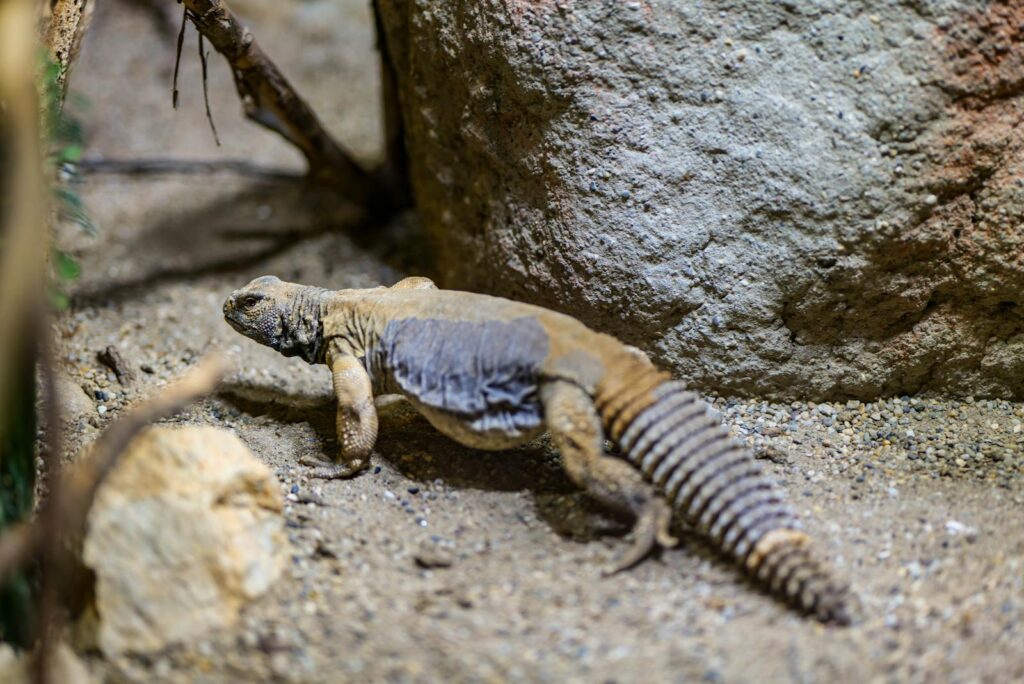
Desert lizards have mastered the art of temperature regulation through both physiological and behavioral adaptations. Many species practice a behavior called “thermal shuttling,” moving between sun and shade throughout the day to maintain optimal body temperature. During early morning, they bask on sun-warmed rocks to raise their body temperature quickly, while during the midday heat, they may retreat to burrows or rock shadows to avoid overheating. Some species can also alter blood flow to their skin, increasing circulation when they need to warm up and restricting it when they need to conserve heat. The frilled-neck lizard of Australia can even change its body orientation to minimize sun exposure during the hottest parts of the day, positioning itself to present the smallest possible profile to direct sunlight.
Water Conservation Strategies
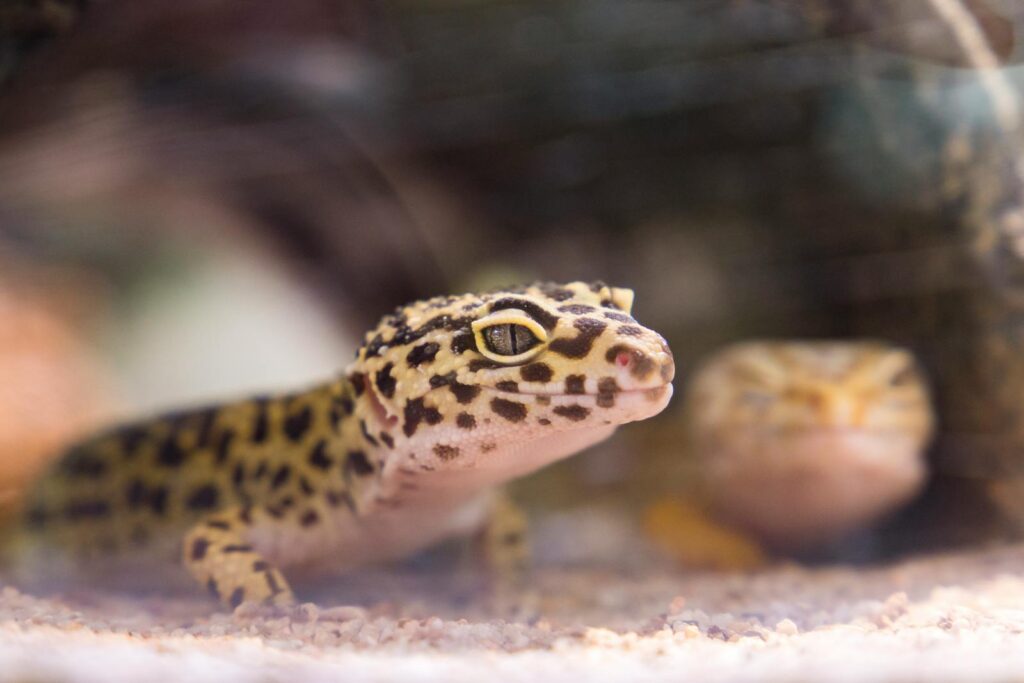
Water conservation represents perhaps the most crucial adaptation for desert survival, and lizards have evolved multiple strategies to address this challenge. Unlike mammals, reptiles produce uric acid rather than urine, which requires minimal water to excrete and comes out as a semi-solid waste, dramatically reducing water loss. Their skin has also evolved to be highly impermeable, with overlapping scales that create an effective barrier against evaporation. Some desert lizards, like the Australian central netted dragon, have specialized nasal passages that condense and recapture water from exhaled breath before it escapes the body. The Texas horned lizard has even developed specialized scales that can direct morning dew into tiny channels leading to its mouth, similar to the thorny devil’s system but with different structural components.
The Sandfish: Swimming Through Desert Sands
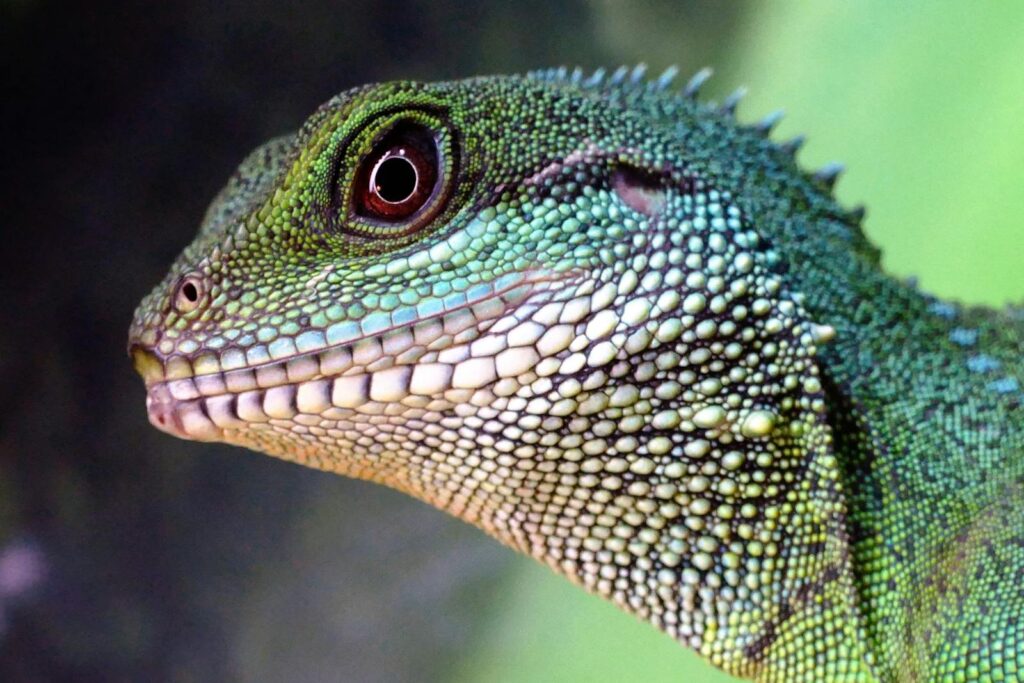
The sandfish (Scincus scincus) of North Africa and the Middle East has developed perhaps the most unusual locomotion strategy of any desert lizard—it literally “swims” through sand. When threatened, this lizard can dive beneath the desert surface and move through loose sand as if it were water, a behavior that gave rise to its common name. High-speed X-ray imaging has revealed that the sandfish uses wave-like body motions similar to those of swimming snakes, with its polished, low-friction scales reducing drag as it moves. Its streamlined head shape and countersunk jaw prevent sand from entering its mouth and respiratory system during these subterranean journeys. This adaptation not only provides an effective escape from predators but also allows the sandfish to avoid extreme surface temperatures during the hottest parts of the day.
Specialized Diet Adaptations
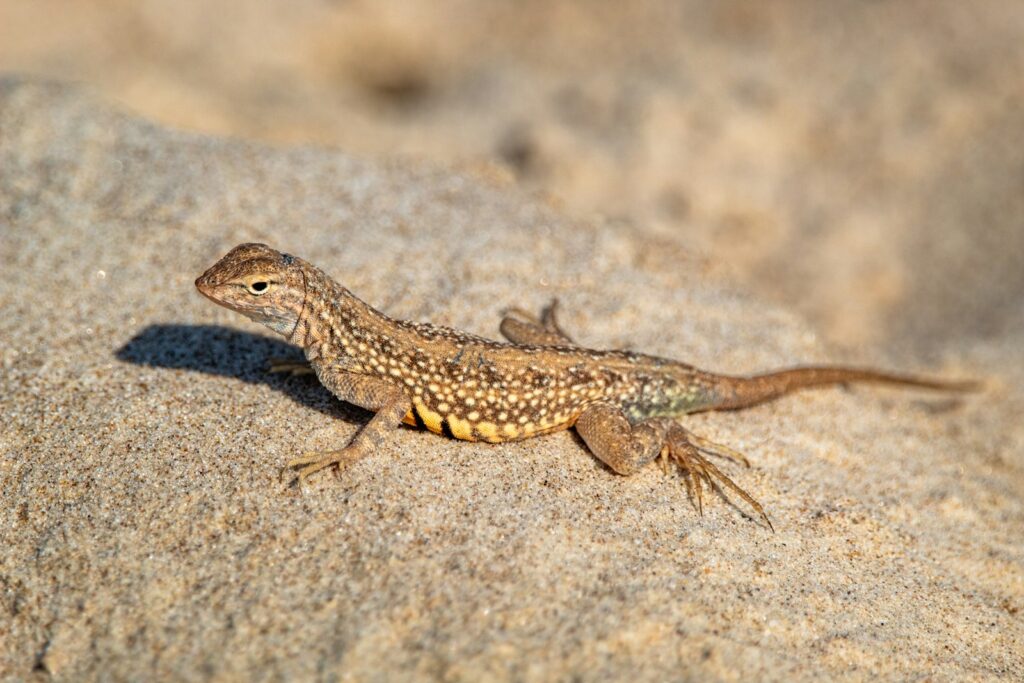
Desert lizards have adapted their diets to maximize nutrient and water intake from limited food sources. Many species have become opportunistic feeders, able to consume a wide variety of prey including insects, small vertebrates, and occasionally plant matter. The desert iguana (Dipsosaurus dorsalis) has evolved a specialized digestive system that can process tough desert vegetation, extracting both nutrients and moisture from plants most animals cannot digest. Some species have developed extremely efficient metabolisms that extract maximum energy from minimal food, allowing them to survive longer periods between meals. The thorny devil specializes in eating ants, sometimes consuming thousands in a single day, extracting the minute amounts of moisture contained in each ant’s body as a supplementary water source.
Behavioral Survival Techniques

The behavioral adaptations of desert lizards are no less impressive than their physiological ones. Many species shift their active periods seasonally, becoming primarily nocturnal during hot summer months and diurnal during milder seasons. Burrowing behaviors are common, with species like the fringe-toed lizard able to dive beneath the sand surface in seconds when threatened or to escape heat. Some species practice a behavior called “stilting,” where they raise their bodies off hot surfaces using extended limbs to reduce heat transfer from scorching sands that can exceed 70°C (158°F). The desert horned lizard employs perhaps the most startling defensive behavior—when threatened, it can increase blood pressure in capillaries around its eyes and squirt blood at predators, a deterrent that’s particularly effective against canine predators.
The Gila Monster: Desert Venom Specialist

The Gila monster (Heloderma suspectum) represents one of only two venomous lizard species globally and has evolved a unique approach to desert survival. Unlike most desert lizards that are agile and quick, the Gila monster is relatively slow-moving but compensates with a potent defensive venom and a chunky body that stores fat and water. This lizard can store significant fat reserves in its tail and body, allowing it to survive for months without feeding. Its specialized metabolic adaptations enable it to operate on approximately one-tenth the energy requirements of similarly sized mammals. The Gila monster’s distinctive bright warning coloration of pink and black serves as a visual deterrent to potential predators, an effective energy-saving strategy that helps it avoid unnecessary confrontations.
Reproduction in Harsh Conditions

Reproducing successfully in desert environments presents unique challenges that lizards have overcome through specialized adaptations. Many species time their breeding cycles to coincide with brief seasonal rainfall, ensuring hatchlings emerge when food resources are most abundant. The Australian central bearded dragon produces eggs with shells that balance water retention with gas exchange, preventing dehydration while allowing the embryo to breathe. Some desert lizards exhibit temperature-dependent sex determination, where the incubation temperature determines whether eggs develop into males or females, potentially allowing population sex ratios to adjust to changing environmental conditions. Certain species, like the desert night lizard, have evolved viviparity (live birth) rather than egg-laying, keeping developing young inside the mother’s body where hydration and temperature can be better regulated.
The Desert Iguana’s Heat Tolerance

The desert iguana (Dipsosaurus dorsalis) of the southwestern United States and northwestern Mexico holds the remarkable distinction of being one of the most heat-tolerant vertebrates on Earth. While most reptiles become heat-stressed at body temperatures above 40°C (104°F), the desert iguana can function normally with a body temperature of 45°C (113°F) and can survive brief exposures to temperatures approaching 47°C (117°F). This extraordinary heat tolerance involves specialized cellular adaptations, including heat-shock proteins that prevent cellular damage at temperatures that would be lethal to most animals. The desert iguana’s highly efficient circulatory system helps distribute heat throughout its body, preventing localized overheating that could damage vital organs. This remarkable heat tolerance allows the desert iguana to remain active during midday hours when most predators have retreated from the heat, giving it exclusive access to food resources.
Evolutionary History and Adaptations
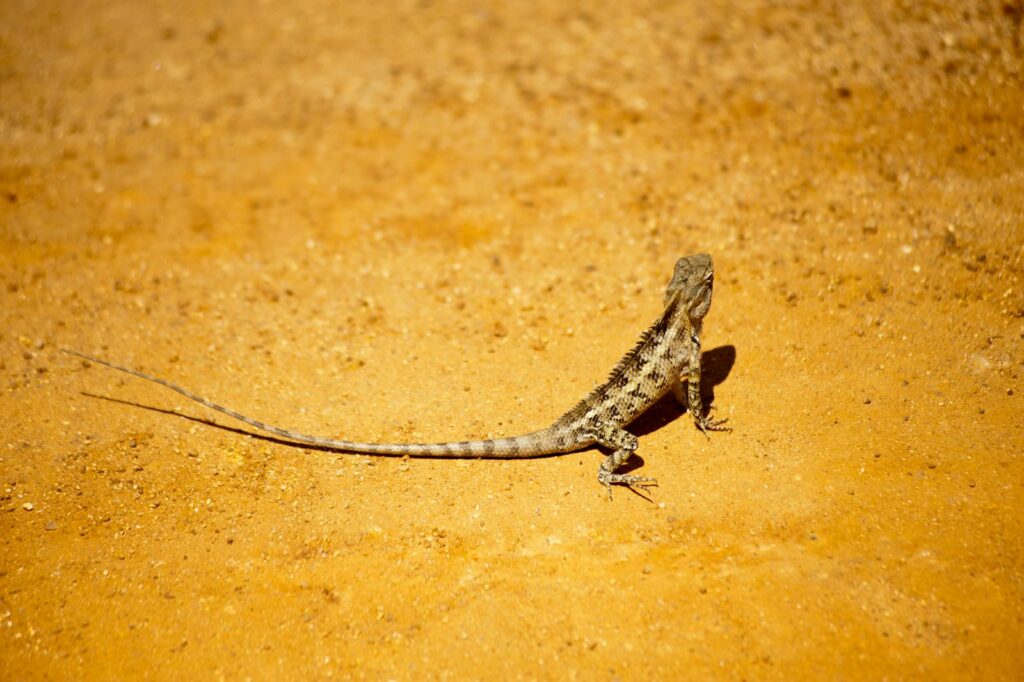
The remarkable adaptations of desert lizards represent the culmination of millions of years of evolutionary pressure in some of Earth’s most challenging environments. Fossil evidence suggests that many modern desert lizard lineages began specializing for arid conditions during the mid-Miocene epoch, approximately 15 million years ago, when global climate shifts created expanding desert regions. Genetic studies indicate that certain key adaptations, like efficient water conservation mechanisms, have evolved independently in multiple lizard lineages across different desert regions around the world, a clear example of convergent evolution. The rate of adaptation accelerated during periods of extreme climate fluctuation, with species that could adjust most rapidly to changing conditions passing their adaptive genetics to subsequent generations. Today’s desert lizards represent the successful survivors of this evolutionary gauntlet, carrying adaptations refined through countless generations of natural selection.
Conservation Challenges in a Changing Climate
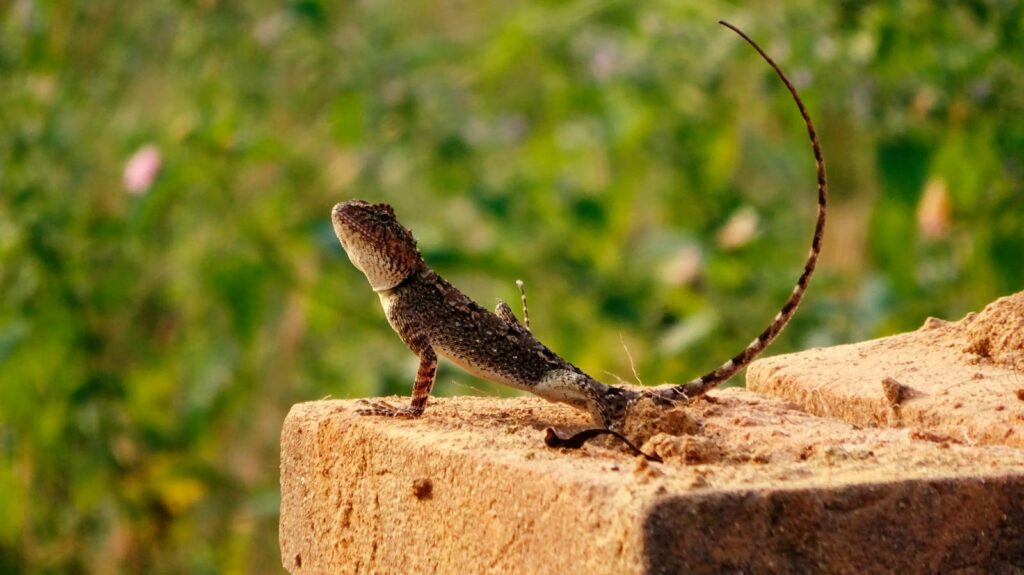
Despite their impressive adaptations, desert lizards face new challenges from human activity and climate change that may test the limits of their resilience. Rising global temperatures are pushing some desert regions beyond even the extraordinary tolerances of these specialized reptiles, with studies showing population declines in species like the fringe-toed lizard when temperatures exceed historical norms. Habitat fragmentation from development, mining, and energy projects disrupts movement corridors that have historically allowed lizard populations to adjust their ranges in response to climate shifts. Invasive species like fire ants and non-native grasses have altered desert ecosystems in ways that can negatively impact native lizard populations by changing prey availability and increasing wildfire frequency. Conservation efforts focused on preserving large, connected tracts of desert habitat represent the best hope for maintaining the biodiversity of these remarkable reptiles into the future.
Conclusion

The desert lizards of our world stand as testament to the extraordinary adaptability of life, even in Earth’s most challenging environments. Through millions of years of evolution, these remarkable reptiles have developed physiological, behavioral, and anatomical adaptations that transform seemingly insurmountable challenges into survival advantages. From the water-harvesting spines of the thorny devil to the sand-swimming abilities of the sandfish, each adaptation represents an elegant solution to the problems of extreme heat, scarce water, and limited resources. As climate change continues to alter our planet’s environments, the study of these desert specialists may yield valuable insights not only into evolutionary biology but also into resilience strategies that could inform human approaches to increasing aridity in many regions of the world.


